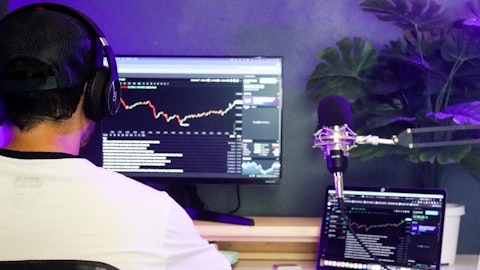So we are happy and we feel strong to go over the volatility that looks already came a bit and it will come more. So volumes is the equation that can fluctuate that are more free. Market share is a must, equity is a must and cash is a must for us over there, and that’s how we are operating moving forward.
Lucas Lira: Let me just add one point here, Jean. Ben, for illustration purposes we included in our release, if you go to Page 17, a simulation that we did regarding the impact on our year-to-date consolidated profit, right, of a potential devaluation of the peso – the Argentinian peso that took place in mid-August, right. Exclusively in terms of FX translation effects and the transactional effects caused by the FX exposure. And as per that simulation, right, the net impact – the net negative impact would be approximately of 2%, okay. Just to give – just to give a sense and put kind of the performance in perspective, okay.
Ben Theurer: Yes. That was very clear. Thank you very much, Lucas, and thanks, Jean.
Operator: The next question comes with Felipe Ucros with Scotiabank. Please go ahead.
Felipe Ucros: Thanks, operator, and good morning, Jean, Lucas and team. Thanks for taking my question. So, two questions that are really sort of related to the same issue around the value segment of your portfolio. So the first one that I wanted to ask is, how do you think about the Petrópolis situation and how that relates to the value segment? Is the value segment essentially going to disappear in Brazil? Would you guys sort of decreasing the focus on that and Petrópolis suffering? Is that forcing the consumers into mainstream? And then I guess a related question is how do you think about the importance of value? So you have delivered many quarters of very successful premiumization and as I understand it, value obviously hasn’t performed nearly as nicely. So how do you think about the value segment of its importance if we were to go into an economic slowdown?
Jean Jereissati: So Felipe, thank you very much for the question. So we always had a very tactical play on the value segment. It was usually through line extensions like Antarctica Sub-Zero or like regional brands that we have for one state and for the other. So it was always played that it was more tactical than strategic for us in general and what really – because we know that there is a piece of the market that price points and so the affordability is really necessary, but our bet and our commitment is really with the core brands in the long-term, okay. So having said that, I think what changed it, it is that we had ISMART, for a while now, we have ISMART. ISMART play on the back side on the core segment. So we really reignited this strategy of returnable glass bottles, 300 ml and really gave the spec for the core brands more than to the value brand.
The value brands, they are usually on cans. And then we brought this affordability to the core with the returnable strategy and this is really paying off. Okay? So and together with this strategy, we really unplugged discounts overall that made this segment really diminish in our volumes. Okay? But having said that, we see like Antarctica, a brand that is much stronger right now with this strategy. In the past we had Antarctica and Antarctica sub zero. Now, we see nationally Antarctica occupying this role and be more – and be stronger on that. We see Brahma that is like our leading brand is really with a piece of affordability on display, at some point in time, we had Brahma Refresh in the north, so we don’t have it anymore. Now Brahma has to really occupy this space in the mind of consumers and we have to have some packs that deliver the affordability.
So yes, so we moved from a tactical play on the value to a more bold and strategic move on the core. And I think this will make the core much more resilient and sustainable for the next years.
Felipe Ucros: Very, very clear. Thanks a lot.
Operator: The next question comes with Alan Alanis with Santander. Please go ahead.
Alan Alanis: Thank you so much. JJ and Lucas, congratulations on the results. I’m going to shift gears completely with my two questions. The first one has to do with Canada. I mean, this is the first time that we see a double-digit volume decline in 12 years. Could you speak a little bit more of what happened in Canada and what’s the outlook? And the second and most important question, I think, is trying to understand your capital deployment, particularly cash back to shareholders thinking for Ambev. Let me contextualize this. Your parent company, ABI, announces a $1 billion share buyback program today when they are above three times net debt to EBITDA, and their stock is trading at a 50% higher multiple than Ambev. Ambev is sitting on more than $2.5 billion of net cash.
He has no debt, and the stock is trading at a steep discount to ABI. So I guess the point blind question is, why isn’t Ambev also announcing a share buyback program if the multiple is at such a discount versus ABI? And you’re with over $2.5 billion of net cash? Thank you.
Lucas Lira: Hello, Alan, Lucas here. Thank you for the questions. Regarding Canada. You’re right. It was indeed a very tough quarter from a volume perspective. When we break that volume performance down by driver, more than half of that was really the industry. Okay. And within industry, it was a combination of less household penetration, very poor weather throughout the quarter, not only in terms of precipitation, but you had fires in Ontario, you had floods in Nova Scotia, in Quebec. So weather for sure did not help, number one. Number two, less household penetration also did not help. Number three, there was also some kind of destocking in the trade over the course of the third quarter, okay, and all this kind of impacted the industry as a whole.




